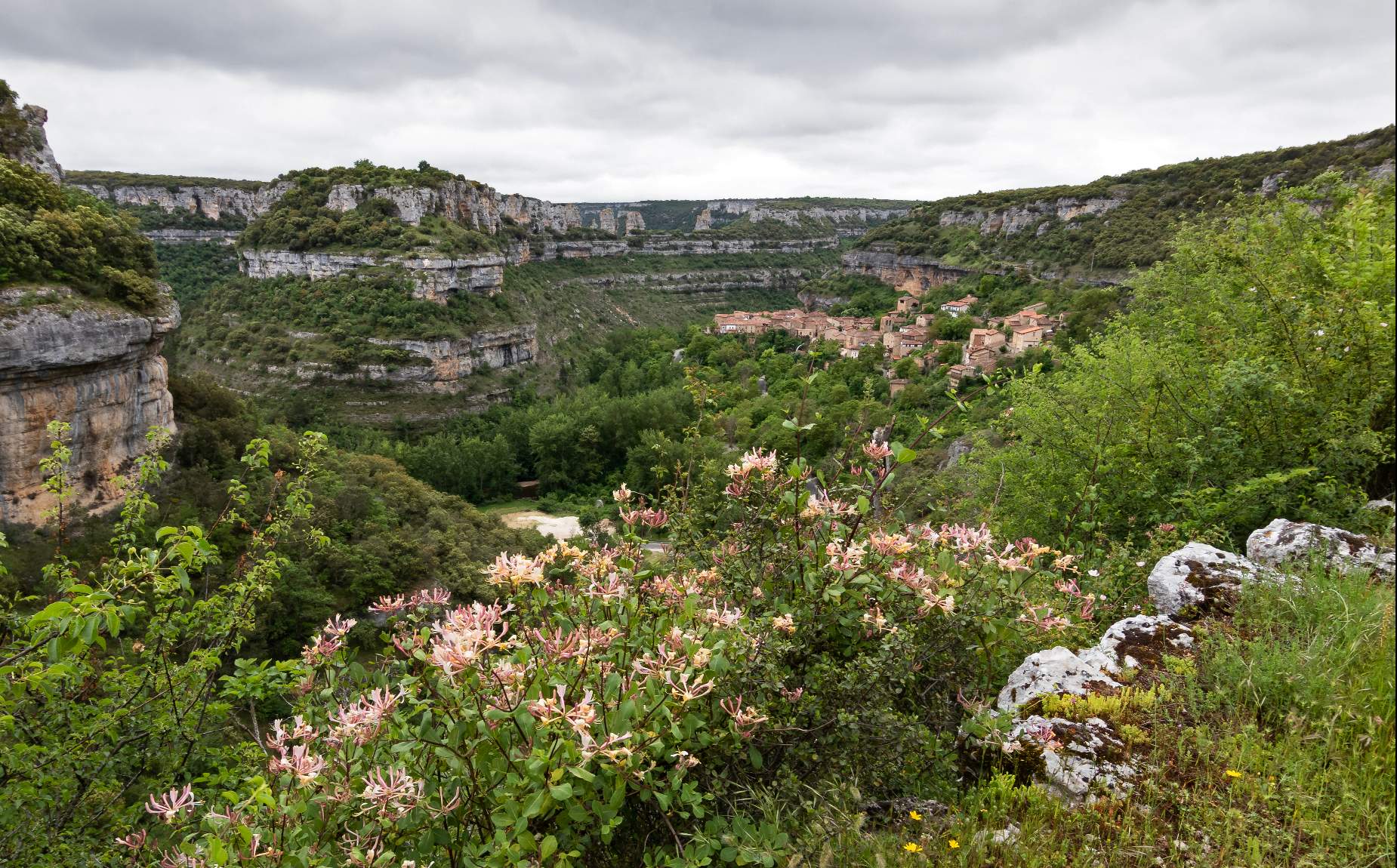Protected Areas
Unique and scarce habitats in the Iberian Peninsula
Between Burgos and Palencia, covering 16 municipalities.
The Las Loras Geopark, located in the south of the eastern sector of the Cantabrian Mountains, extends through the north of the provinces of Burgos and Palencia, covering 16 municipalities. This territory is home to an exceptional natural diversity and maintains an optimal state of conservation. Las Loras exhibits unique habitats, rare in the Iberian Peninsula, providing refuge to numerous endangered species of flora and fauna. This biological richness has led to the designation of 10 figures of environmental protection, including 7 Natura 2000 sites and 3 sites of the Network of Protected Natural Spaces of Castilla y León.
Hoces del Ebro and Rudrón Natural Park: A landscape sculpted by the waters of two rivers
The Ebro and Rudrón rivers have shaped these landscapes, sculpting canyons, gorges and gorges up to 200 meters deep on the limestone wasteland of La Lora. The water, in its path, has generated karstic landscapes that are manifested through a complex network of caves and springs, beautiful waterfalls and tuffaceous buildings. Declared as a Natural Park within the Natura 2000 Network, it becomes a place to connect with nature, through the magic of its forests, where gall oaks, oaks and oak and beech intertwine with beech. You can marvel at the majestic flight of birds of prey such as the golden eagle and the griffon vulture, or follow the tracks of the elusive otter and the elusive Pyrenean desman. Undoubtedly, it is a place where nature unfolds its charm in every corner.
Las Tuerces Protected Landscape and Natural Monument ?El Laberinto de Las Tuerces?
Las Tuerces, a fascinating natural labyrinth sculpted by the force of water that over the years has been dissolving the limestone rocks of the Upper Cretaceous. This enclave offers a spectacle of whimsical forms: gigantic stony mushrooms, bridges and natural arches, closed alleys and shady covachuelas. It invites to a quiet walk and contemplation, revealing a unique magic. The geomorphology of Las Tuerces offers a scenario of extraordinary biodiversity, from enclaves of beech and hazel in cool alleys to meadows adorned with genista and heather. In addition, the landscape is enriched by dense forests of gall oak, melojo and kermes oak. The fauna, equally diverse, includes outstanding birds such as the griffon vulture, golden eagle and peregrine falcon. This natural enclave, declared a Natural Monument within the Natura 2000 Network, stands as the ideal place to experience the magic and overwhelming history of the Earth.
Covalagua Protected Landscape and Natural Monument. A landscape that illustrates in its beauty the complexity of its karstic formation.
A landscape shaped by the power of water, which has dissolved the calcium carbonate present in the limestone, giving life to a karst that manifests itself on the surface through fascinating dolines and lapiaces. But that's not all, when the water finds its impermeable limit, it dazzles the visitor by coming out creating the spectacular waterfall of Covalagua, a charming place that gives its name to this Natural Area. It even offers the opportunity to enter the intriguing subway world thanks to the visitable Cueva de los Franceses, a representative example of a karst cave in the area. In this natural enclave, designated as a Natural Monument within the Natura 2000 Network, the Apollo butterfly captivates visitors with its white wings, dotted with red and black spots. This delicate insect from mountainous regions contributes to the biological richness of the area, adding a touch of beauty and romanticism. Its presence becomes an additional incentive for those who wish to explore and appreciate the wonders of nature in a sustainable and respectful way.
Humada-Peña Amaya Special Protection Area for Birds. The paradise of birds
Between the Cantabrian Mountains and the Northern Plateau, this vast territory embraces most of the region of Las Loras and extends towards the transition to the sedimentary basin of the Duero. What distinguishes this region is its relief characterized by impressive rocky and limestone cliffs, creating an exceptional natural scenery. The floral diversity is astonishing, with beech forests on the shady slopes, grasslands and holm oak forests in the higher areas, as well as gall oaks and oak groves in the valleys and slopes. But the highlight is the presence of a surprising variety of orchids, making this territory home to almost half of the orchids of the Iberian Peninsula. The imposing rocky outcrops, a distinctive feature, provide the perfect nesting environment for rupicolous birds, such as the griffon vulture, Egyptian vulture, golden eagle, peregrine falcon and eagle owl. This breathtaking natural scenery invites you to live an authentic nature experience, where the majesty of the geography combines with the rich biodiversity, creating a unique refuge for wildlife.






